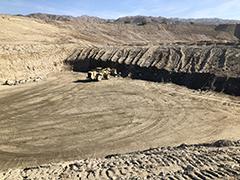The BLM approves expansion of existing sand and gravel quarry
Organization:
BLM Office:
Media Contact:
PALM SPRINGS, Calif. — The Bureau of Land Management has approved the expansion of Simon Quarry, an existing sand and gravel quarry on public land near Indio in Riverside County. The decision authorizes Simon Concrete & Aggregate, LLC, owned and operated by Superior Ready Mix, Inc., to utilize an additional 132 acres of public land to provide the greater Coachella Valley area with construction aggregate products.
“The BLM completed an environmental analysis and received input from the public, Tribes, and our partners to help inform our decision,” said Tim Gilloon, BLM Palm Springs-South Coast field manager. “The BLM promotes healthy and productive public lands and is committed to responsible mining that balances conservation and mineral development, an important land use within the BLM’s multiple-use mandate.”
The existing concrete mixing and asphalt plant and quarry occupy about 100 acres of BLM-managed public land and have been in operation since 1987. The plant and quarry support 60 jobs and generates about $375,000 per year in mineral royalties for the federal government.
The decision record approves the mining plan which expands the quarry an additional 132 acres, totaling 232 acres of disturbance on public land. The approval is estimated to result in a total extraction of 45.7 million tons of aggregate products over the next 95 years.
Additional information, including the environmental analysis, finding of no significant impact, decision record and associated documents are available on ePlanning here: https://bit.ly/3ugWMNv.
The BLM manages about 245 million acres of public land located primarily in 12 western states, including Alaska, on behalf of the American people. The BLM also administers 700 million acres of sub-surface mineral estate throughout the nation. Our mission is to sustain the health, diversity, and productivity of America’s public lands for the use and enjoyment of present and future generations.

